Audi 2012 Annual Report Download - page 186
Download and view the complete annual report
Please find page 186 of the 2012 Audi annual report below. You can navigate through the pages in the report by either clicking on the pages listed below, or by using the keyword search tool below to find specific information within the annual report.-
 1
1 -
 2
2 -
 3
3 -
 4
4 -
 5
5 -
 6
6 -
 7
7 -
 8
8 -
 9
9 -
 10
10 -
 11
11 -
 12
12 -
 13
13 -
 14
14 -
 15
15 -
 16
16 -
 17
17 -
 18
18 -
 19
19 -
 20
20 -
 21
21 -
 22
22 -
 23
23 -
 24
24 -
 25
25 -
 26
26 -
 27
27 -
 28
28 -
 29
29 -
 30
30 -
 31
31 -
 32
32 -
 33
33 -
 34
34 -
 35
35 -
 36
36 -
 37
37 -
 38
38 -
 39
39 -
 40
40 -
 41
41 -
 42
42 -
 43
43 -
 44
44 -
 45
45 -
 46
46 -
 47
47 -
 48
48 -
 49
49 -
 50
50 -
 51
51 -
 52
52 -
 53
53 -
 54
54 -
 55
55 -
 56
56 -
 57
57 -
 58
58 -
 59
59 -
 60
60 -
 61
61 -
 62
62 -
 63
63 -
 64
64 -
 65
65 -
 66
66 -
 67
67 -
 68
68 -
 69
69 -
 70
70 -
 71
71 -
 72
72 -
 73
73 -
 74
74 -
 75
75 -
 76
76 -
 77
77 -
 78
78 -
 79
79 -
 80
80 -
 81
81 -
 82
82 -
 83
83 -
 84
84 -
 85
85 -
 86
86 -
 87
87 -
 88
88 -
 89
89 -
 90
90 -
 91
91 -
 92
92 -
 93
93 -
 94
94 -
 95
95 -
 96
96 -
 97
97 -
 98
98 -
 99
99 -
 100
100 -
 101
101 -
 102
102 -
 103
103 -
 104
104 -
 105
105 -
 106
106 -
 107
107 -
 108
108 -
 109
109 -
 110
110 -
 111
111 -
 112
112 -
 113
113 -
 114
114 -
 115
115 -
 116
116 -
 117
117 -
 118
118 -
 119
119 -
 120
120 -
 121
121 -
 122
122 -
 123
123 -
 124
124 -
 125
125 -
 126
126 -
 127
127 -
 128
128 -
 129
129 -
 130
130 -
 131
131 -
 132
132 -
 133
133 -
 134
134 -
 135
135 -
 136
136 -
 137
137 -
 138
138 -
 139
139 -
 140
140 -
 141
141 -
 142
142 -
 143
143 -
 144
144 -
 145
145 -
 146
146 -
 147
147 -
 148
148 -
 149
149 -
 150
150 -
 151
151 -
 152
152 -
 153
153 -
 154
154 -
 155
155 -
 156
156 -
 157
157 -
 158
158 -
 159
159 -
 160
160 -
 161
161 -
 162
162 -
 163
163 -
 164
164 -
 165
165 -
 166
166 -
 167
167 -
 168
168 -
 169
169 -
 170
170 -
 171
171 -
 172
172 -
 173
173 -
 174
174 -
 175
175 -
 176
176 -
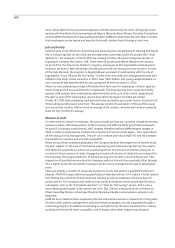 177
177 -
 178
178 -
 179
179 -
 180
180 -
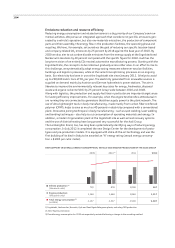 181
181 -
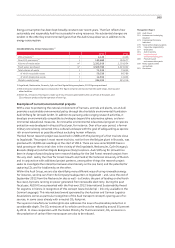 182
182 -
 183
183 -
 184
184 -
 185
185 -
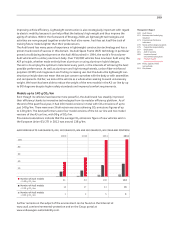 186
186 -
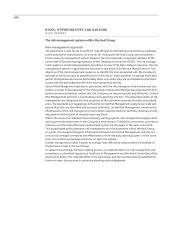 187
187 -
 188
188 -
 189
189 -
 190
190 -
 191
191 -
 192
192 -
 193
193 -
 194
194 -
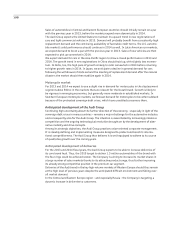 195
195 -
 196
196 -
 197
197 -
 198
198 -
 199
199 -
 200
200 -
 201
201 -
 202
202 -
 203
203 -
 204
204 -
 205
205 -
 206
206 -
 207
207 -
 208
208 -
 209
209 -
 210
210 -
 211
211 -
 212
212 -
 213
213 -
 214
214 -
 215
215 -
 216
216 -
 217
217 -
 218
218 -
 219
219 -
 220
220 -
 221
221 -
 222
222 -
 223
223 -
 224
224 -
 225
225 -
 226
226 -
 227
227 -
 228
228 -
 229
229 -
 230
230 -
 231
231 -
 232
232 -
 233
233 -
 234
234 -
 235
235 -
 236
236 -
 237
237 -
 238
238 -
 239
239 -
 240
240 -
 241
241 -
 242
242 -
 243
243 -
 244
244 -
 245
245 -
 246
246 -
 247
247 -
 248
248 -
 249
249 -
 250
250 -
 251
251 -
 252
252 -
 253
253 -
 254
254 -
 255
255 -
 256
256 -
 257
257 -
 258
258 -
 259
259 -
 260
260 -
 261
261 -
 262
262 -
 263
263 -
 264
264 -
 265
265 -
 266
266 -
 267
267 -
 268
268 -
 269
269 -
 270
270 -
 271
271 -
 272
272 -
 273
273 -
 274
274 -
 275
275 -
 276
276 -
 277
277 -
 278
278 -
 279
279 -
 280
280 -
 281
281 -
 282
282 -
 283
283 -
 284
284 -
 285
285
 |
 |

189
Management Report
140 Audi Group
151 Business and underlying
situation
173 Financial performance
indicators
176 Social and ecological aspects
176 Corporate responsibility
177 Employees
181 Audi in society
182 Location-based
environmental aspects
186 Product-based
environmental aspects
190 Risks, opportunities
and outlook
201 Disclaimer
improving vehicle efficiency. Lightweight construction is also strategically important with regard
to electric mobility because it can help offset the battery’s high weight and thus improve the
agility of vehicles. Within the framework of Strategy 2020, all lightweight technologies and
activities are now grouped together under the Audi ultra name. Audi has set itself the task of
making future models lighter than their predecessors.
The Audi brand has many years of experience in lightweight construction technology and has a
proven track record of success in this domain. Its Audi Space Frame (ASF) technology in particular
proved a trailblazing development on the Audi A8 launched in 1994, the world’s first volume-
built vehicle with a unitary aluminum body. Over 750,000 vehicles have now been built using the
ASF principle, whether made entirely from aluminum or using aluminum hybrid designs.
The aim is to employ the optimum material at every point, in the interests of achieving the best
possible performance. As well as aluminum and high-strength steels, carbon fiber-reinforced
polymers (CFRP) and magnesium are finding increasing use. But the Audi ultra lightweight con-
struction principle does not mean that we just concern ourselves with the body or with assemblies
and components. Rather, we look at the vehicle as a whole when seeking to avoid unnecessary
weight. We have thus been able to reduce the weight of the new models in the A3 car line by up
to 90 kilograms despite higher safety standards and improved comfort requirements.
Models up to 140 g CO₂/km
Even though its vehicles have become more powerful, the Audi brand has steadily improved
their efficiency thanks to innovative technologies from its modular efficiency platform. As of
the end of the past fiscal year, it had 104 model versions in total with CO2 emissions of up to
just 140 g/km. There were even 36 drivetrain versions achieving CO2 emissions figures of up
to 120 g/km. The best performers were four model versions of the A1 car line and two model
versions of the A3 car line, with 99 g of CO2/km.
Provisional calculations indicate that the average CO2 emissions figure of new vehicles sold in
the European Union (EU 27) in 2012 was around 138 g/km.
AUDI MODELS UP TO 140 GRAMS CO2/KM, 120 GRAMS CO2/KM AND 100 GRAMS CO2/KM (YEAR-END POSITION)
Further remarks on the subject of the environment can be found on the Internet at
www.audi.com/environmental-protection and on the Group portal at
www.volkswagen-sustainability.com.
20
60
40
80
100
201120102009 2012
41 54 102 104
14 17 32 36
1256
Number of Audi models
≤ 140 g CO2/km
Number of Audi models
≤ 120 g CO2/km
Number of Audi models
≤ 100 g CO2/km
